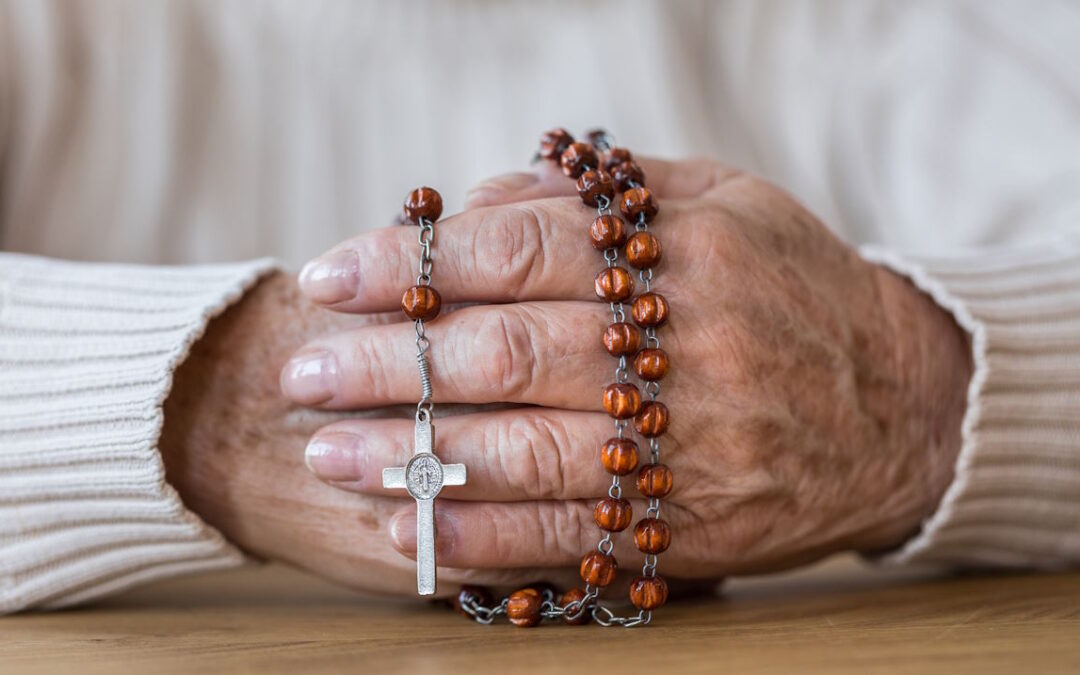I know of two men who make regular trips to the dementia unit of a local nursing home. Two or three times a month one of them brings a statue of Mary and leads them in the rosary.
To the outside observer, there seems to be few results from what they do. The man arrives, the TV is turned off, and the prayers are led. About 15 residents, mostly glassy-eyed or with eyes closed, gather in the community room.
The residents are arranged in rows facing the front of the room. You might see a person with black and blue marks on their face, sad evidence of having fallen.
The prayers are heard throughout the room. None of the residents can be heard joining the leader, although one or two women in the front row move their lips with the words of the Hail Mary. An attendant will feed a resident, move them in their chair, or attend to another need.
In less than a half an hour, the leader ends with a few positive words and a smile for the residents. There is little acknowledgement from the residents. The statue is put back in a bag, and the man leaves.
What we cannot see
For the residents, many of whom may have lost their ability to communicate or even be aware of their surroundings, these visits offer a sense of routine and familiarity. Even if the residents don’t actively participate in the prayers, the presence of the leader and the sound of the prayers being recited may evoke memories, emotions, or feelings of comfort. For individuals with a religious background, this may be particularly meaningful.
Additionally, the staff members who support and care for these residents also benefit from this atmosphere of compassion and empathy. This can bring a sense of fulfillment to the staff members, reminding them of the importance of their work and the positive impact they have on the lives of those who cannot acknowledge the help they get.
What good are these visits, you may ask? The consistent presence of these men and the practice of prayer can have subtle yet important impacts on the residents, staff and wider community in this challenging and isolating environment.
Who can deny that God’s grace is extended in this way in a circle of grace, providing far-reaching but unknown effects?

